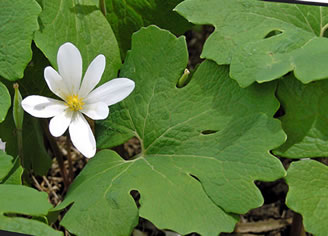
Indian Paint. Tetterwort. Red Pucoon. Red Root. Paucon. Coon Root. Snakebite. Sweet Slumber.
Bloodroot (Sanguinaria canadensis) is a perennial, herbaceous flowering shrub native to North America.. Bloodroot owes its name from the bright orange-red juice that comes out of its rhizomes similar to human blood. Bloodroot juice has been largely used by Native Americans as dyes and for variety of medicinal benefits.
Bloodroot is a plant that grows up to 50 cm in height usually with one large multi-lobed green leaf. Bloodroot flowers bloom in early spring, to a white, eight to twelve, cup-shape petals. Bloodroot flowers have bright yellow stamens. The rhizomes that grow under the soil surface can grow to a wide colony. Bloodroot rhizomes produce a bright red-orange juice. Bloodroot seeds develop to long green pods up to 60 mm in length that ripen before the foliage goes dormant. Bloodroot seeds are round in shape and when ripe is black to orange-red in color.
Bloodroot is used as insect repellant and as industrial dye.
Bloodroot contains variety of chemicals including alkaloids Sanguinarine, Chelerythrine, Protopine and B. homochelidonine. The rhizome also contains red resin and an abundance of starch, these constituents make the Bloodroot useful in the treatment of variety of illness, although limited medical and scientific research may support its claims.
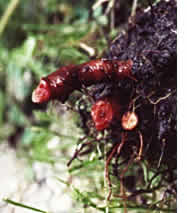
Bloodroot is used to treat skin problems. Bloodroot extract contains sanguinarin that has anesthetic, anti-bacterial, anti-inflammatory and anti-fungal properties. Bloodroot is effective in treating skin conditions such as warts, moles, skin tags and various skin inflammations.
Bloodroot is used to treat respiratory problems. Several Native American tribes used bloodroot to treat colds and congestion as either a tea or an inhaled powder. It is used as bronchial muscle relaxant for asthma, a treatment for croup, influenza and whooping cough, and as an expectorant.
Antibacterial agent. The American Indians used a decoction of bloodroot to treat diphtheria, pneumonia, a treatment for tuberculosis and as an inhaled powder to treat nasal polyps. Bloodroot is also used to treat wounds and gangrene,
Sore throats. The Ojibwe of Wisconsin used bloodroot as a lozenge for sore throats by adding it to a cube of maple sugar.
Bloodroot is used for gastrointestinal problems, Some American Indian tribes uses a small amount of bloodroot rhizomes to treat nausea and vomiting, while larger doses are used as an emetic. Combined with blue cohosh, it used to treat abdominal cramps and gastrointestinal haemorrhage
Bloodroot is used to improve menstrual flow. Native American women used bloodroot when having menstrual difficulty.
Abortificient. Bloodroot is also used by the Native American women for birth control and as an abortificant.
Anti inflammatory effect. The elderly used bloodroot tea to help their rheumatism, arthritis, and various body aches and pain.
Bloodroot is used for dental care. Bloodroot has been approved by FDA as toothpaste ingredient. Bloodroot extract has been found to fight infections like gingivitis and prevent the formation of cavities, plaque and tartar.
Bloodroot used to treat cardiac conditions: Bloodroot is being used by pharmaceuticals as an ingredient for making drugs for heart problems. Bloodroot is believed to prevent heart palpitations and can improve blood flow in the body
Bloodroot used as an anesthetic. Bloodroot is used to treat migraine, body pains and joint pains.
Blood coagulant. The Native Americans used a decoction of bloodroot to act as a coagulant to arrest bleeding due to sustained wounds.
Burn treatment. Bloodroot rhizomes are chewed and the masticated spittle are used to relieve pains due to burns.
Stimulate appetite. Bloodroot was also used to stimulate appetite, treat dysentery, functional dyspepsia.
Liver diseases. The Native Americans used bloodroot to treat jaundice and chronic liver disease and as a cure for alcoholism.
Hair care and baldness. With the addition of glycerine it was used to rejuvenate hair follicles and prevent baldness.
Cancer treatment. An American surgeon, Jesse Weldon Fell, studied the Cherokee Indians' use of bloodroot to treat cancer, and found that zinc chloride enhanced its action. Dr. Fell developed the use of Bloodroot and zinc chloride into a cancer salve first reported in the medical literature in the Lancet in 1857. Similar topical treatments known as Black Salve remain in use today.
Bloodroot (Sanguinaria canadensis L., Papaveraceae) Enhances Proliferation and Cytokine Production by Human Peripheral Blood Mononuclear Cells in an In Vitro Model.
Previous studies have suggested that phytomedicinal preparations from bloodroot (Sanguinaria canadensis L.) may harbor immunomodulatory properties. The purpose of this investigation was to determine the effects of alcohol tinctures and water infusions generated from bloodroot flowers, leaves, rhizomes, and roots on human peripheral blood mononuclear cell (PBMC) cytokine production and proliferation in vitro. PBMCs were collected from 16 healthy young adults and cultured with bloodroot extracts or respective controls for interleukins-1β, -2, -8, -10, interferon-γ, and tumor necrosis factor. Overall, infusions demonstrated greater immunomodulatory capabilities than tinctures, and flower- and root-based extracts showed greater immunomodulatory properties than leaf- or rhizome-based extracts (some effects seen with root-based extracts may be due to endotoxin). Several extracts were able to augment PBMC proliferation and diminish K562 proliferation, suggesting a selective anti-carcinogenic activity. The rhizome alcohol tincture had a markedly stronger effect against K562 cells than other extracts. Chelerythrine, sanguinarine, and endotoxin (but not berberine) sometimes correlated with observed effects. The in vitro activities demonstrated here suggest bloodroot extracts may have potential as therapeutic immunomodulators. Source: J Herbs Spices Med Plants. 2009 Jan 1;15(1):45.
Antitumor effects of the benzophenanthridine alkaloid sanguinarine: Evidence and perspectives
Recently, increasing evidence that sanguinarine exibits anticancer potential through its capability of inducing apoptosis and/or antiproliferative effects on tumor cells, has been proved. Moreover, its antitumor seems to be due not only to its pro-apoptotic and inhibitory effects on tumor growth, but also to its antiangiogenic and anti-invasive properties. Although the precise mechanisms underlying the antitumor activity of this compound remain not fully understood, in this review we will focus on the most recent findings about the cellular and molecular pathways affected by sanguinarine, together with the rationale of its potential application in clinic. The complex of data currently available suggest the potential application of sanguinarine as an adjuvant in the therapy of cancer, but further pre-clinical studies are needed before such an antitumor strategy can be effectively translated in the clinical practice. Source: World J Gastrointest Oncol. 2016 Jan 15; 8(1): 30–39.
Antimicrobial action of sanguinarine.
Sanguinarine is a benzophenanthridine alkaloid derived from rhizomes of Sanguinaria canadensis L. (bloodroot). It is a cationic molecule which converts from an iminium ion form at pH less than 6 to an alkanolamine form at pH greater than 7. Sanguinaria extract is composed of sanguinarine and five other closely related alkaloids. The safety profile of both sanguinarine and sanguinaria extract provide a broad margin for their safe use in oral health products. Sanguinarine has broad antimicrobial activity as well as antiinflammatory properties. In vitro studies indicate that the anti-plaque action of sanguinaria is due to its ability to inhibit bacterial adherence to newly formed pellicle, its retention in plaque being 10-100 times its saliva concentration, and due to its antimicrobic properties. The MIC of sanguinarine ranges from 1 to 32 micrograms/mL for most species of plaque bacteria. Long term use of sanguinaria-containing toothpaste and oral rinse products does not predispose users to detrimental shifts in oral flora. Electron microscopic studies of bacteria exposed to sanguinarine demonstrate that bacteria aggregate and become morphologically irregular. Sanguinarine-containing slow release polymer systems are currently being developed for use in periodontitis treatment applications. Source: J Clin Dent. 1989 Spring;1(4):96-101.
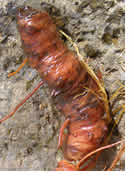 Bloodroot plant is widely cultivated and can be sourced through local horticulturist. Bloodroot leaves, flowers and fruit, roots and bark can be harvested from fields.
Bloodroot plant is widely cultivated and can be sourced through local horticulturist. Bloodroot leaves, flowers and fruit, roots and bark can be harvested from fields.
Bloodroot is also commercially prepared in powder, tincture and capsules taken as supplements. They are available in most fitness and health stores. Bloodroot is also available online via Amazon as listed: Herb Pharm Certified Organic Bloodroot Extract for example, there are other brands, be sure to select one from a reputable manufacturer and do follow the suggested dosage.
Bloodroot tea: Boil 1 teaspoon of bloodroot rhizome (roots) to a cup of water. Let it steep for 10 -15 minutes. Drink 3 times daily.
Bloodroot tincture: Take 1-2 ml of the tincture three times a day.
You can add other herbs or honey to improve the efficacy and taste.
Bloodroot is generally safe for most adult people when taken by mouth and in short-term.
May cause skin rashes. Skin contact with the fresh plant can cause a rash. Do not let bloodroot get into your eyes as it can cause irritation.
Potentially toxic. Bloodroot is a potentially toxic herb and if taken in large doses can be fatal. Bloodroot is not edible, may cause stomach irritation.
May aggravate the symptoms of glaucoma. If suffering from this desease, it is advised not to try Black root herbal medicine.
The use of Bloodroot herbal medicine should only be used under the supervision of an herbalist or licensed healthcare professional.
Large dose can cause dizziness, blurring of vision, vomiting, and nausea, burning feeling in the stomach and slowing of heart beat. If these side effect symptoms occur, seek immediate medical help.
Bloodroot herbal extract is not to be given to children without professional medical supervision.
Use of Bloodroot herbal extract is also discourage during pregnancy and lactation.
Bloodroot is not advisable for prolonged use due to potential risk of poisoning. Medical supervision is adviced.
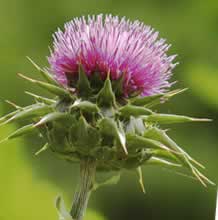 Silymarin extract still tops in liver protection
Silymarin extract still tops in liver protection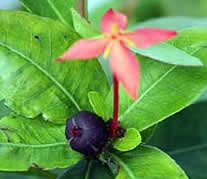 Santan Flower has wound healing properties
Santan Flower has wound healing properties 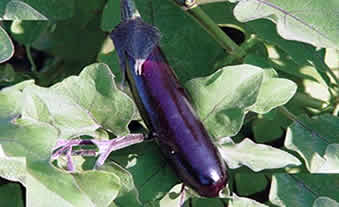 Antioxidant properties from Talong
Antioxidant properties from Talong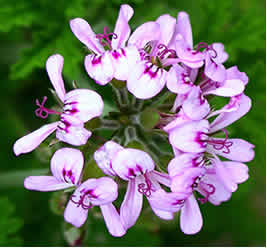 Malvarosa Plant found to have antioxidant properties
Malvarosa Plant found to have antioxidant properties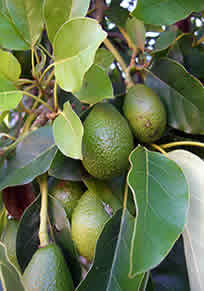 Anti-cancer properties of Avocado fruit
Anti-cancer properties of Avocado fruit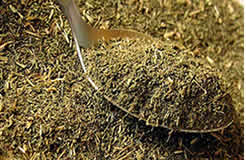 Stevia use can cause cancer, studies suggests
Stevia use can cause cancer, studies suggests